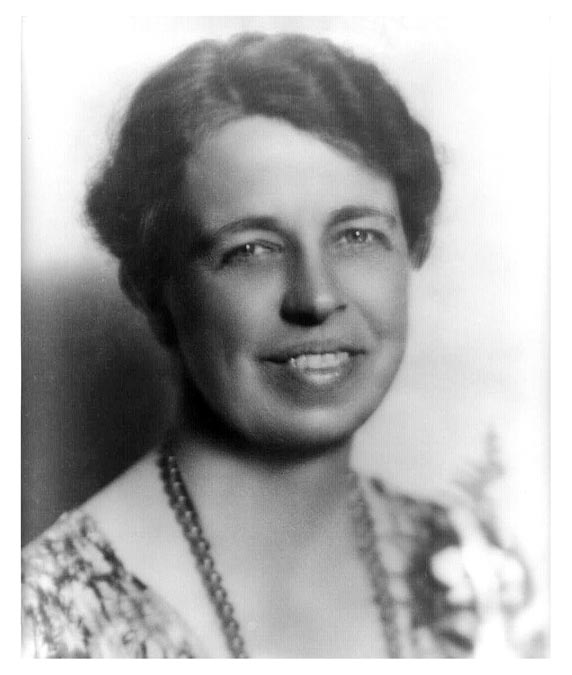

“You have to accept whatever comes and the only important thing is that you meet it with courage and with the best you have to give.” —Eleanor Roosevelt

When her name is spoken, so many images come to mind. How one person can accomplish what Eleanor Roosevelt did is amazing in itself, isn’t it?
She was known as First Lady of New York; First Chair of the United Nations Commission on Human Rights; First Chair of the Presidential Commission on the Status of Women; First Lady of the USA; mother of six; wife to Franklin D. Roosevelt.
In 1999 she was ranked ninth in the top 10 of Gallup’s List of Most Widely Admired People of the 20th Century. She was listed 13 times as the most admired woman between 1948 and 1961.
Anna Eleanor Roosevelt was born October 11, 1884, and died November 7, 1962. Her resting place is home of FDR National Historic Site in Hyde Park, N. Y. next to her husband. President Harry Truman called her, “First Lady of the World” in tribute to her human rights achievements.
She began life with a critical rejecting mother who ridiculed her mercilessly. Her father was an alcoholic who committed suicide. She grew up a shy and retiring child due to these two influences. But her strong inner core made sure she would make her life count, regardless of circumstances.
Eleanor taught at the Todhunter School, a private finishing school for girls on East 89th Street in New York City. She taught courses in American history, American literature, drama, and English. She took students to visit courthouses and to tenements in the city so they could see the problems faced by the poor. In 1927 she joined a picket line marching for The Women’s Trade Union League. She was arrested for disorderly conduct!
Eleanor always wanted a home of her own and not the ones she had to share with her domineering mother-in-law, Sara. Franklin Roosevelt built a home for her named Val-Kill. There she and her women friends had picnics, swimming, enjoyed inside the books and newspapers of the day, and outside the beauty of Nature.
During the years that FDR battled polio, Eleanor became his proxy to give him hope. He was elected to four terms as president of the United States. ”We accept each other’s faults and foibles, a deep understanding, warm affection, and agreement on essential values. We depend on each other,” she said. Eleanor was the first presidential spouse to hold regular press conferences, write a daily newspaper column, write a monthly magazine column, and speak at a national political party convention. She was an advocate for expanded roles for women in the workplace and for the civil rights of African Americans.
The Franklin D. Roosevelt Presidential Library opened June 30, 1941 while he was still in office. He asked Eleanor to turn over the big house at Hyde Park to the federal government as a museum. The Library celebrated its eighty-first anniversary last year.
She was quoted as saying that “In the long run, we shape our lives and we shape ourselves. The process never ends until we die.” The New York Times called her “the object of almost universal respect” in its obituary.

